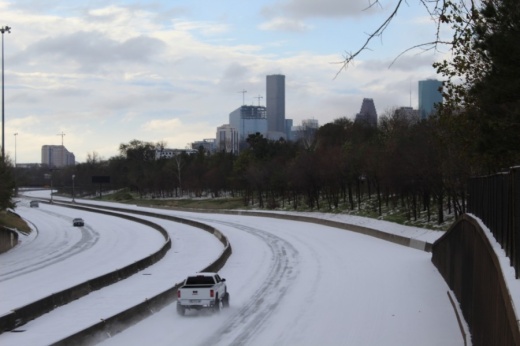The Texas Legislature held hearings Feb. 25 with energy companies, including Oncor Electric Delivery and the Electric Reliability Council of Texas, in response to last week’s historic winter storm, which left millions of Texans without electricity for days.
Gov. Greg Abbott tweeted Feb. 24 that the Texas legislative session will not end until the winterization and stabilization of the Texas power grid is fixed, making it a legislative priority.
I have made it a legislative priority to mandate and fund the winterization and stabilization of the Texas power infrastructure. This will protect our power grid from future winter weather events.
— Gov. Greg Abbott (@GovAbbott) February 25, 2021
During the House’s joint committee meeting, Alan Nye, CEO of Oncor Electric Delivery, said Oncor was 0.002 hertz away from getting into the under frequency relay safety net. Under frequency relays are devices on certain wires that allow an automatic response if frequency decreases to a particular level. Nye said they are the last safety net between light and darkness.
The under frequency relays are set to trip at 59.3 hertz; Oncor experienced 59.302 hertz at 2:02 a.m. Feb. 15. Nye said things deteriorated so fast that their primary concern was to prevent a collapse of the ERCOT power grid.
Because under frequency relays are meant to serve as a last resort buffer for the system, Nye said they are geographically diverse and heavier where there is more load, such as in urban areas. The way they are dispersed is by math, not by socioeconomic status, he said. Between 8% and 9% of the relay feeders serve buildings such as hospitals, critical care facilities and airports.
The ability to rotate outages became restricted as the grid relied on the under frequency relays, Nye said.
In a hearing held by the Senate Committee on Budget & Commerce, ERCOT CEO Bill Magness said the council was analyzing what could be done to avoid a similar crisis in the future and that he was open to suggestions from the Legislature. A key part of the analysis, he said, would involve determining to what extent the failure to winterize different power sources added to the overall damage.
The testimony from Magness came one day after a Feb. 24 emergency meeting where he presented information on how close the state came to a total collapse of the power grid.
After a similar but less severe winter freeze caused power outages in 2011, Magness said the state’s Public Utility Commission adopted a rule requiring generators to have disaster plans in place for future emergencies.
Although ERCOT can make recommendations, the council does not have power to mandate those plans be followed, he said, with generators essentially following an honor system.
“They can decide to take up recommendations or not,” Magness said.
Lawmakers pondered several ways to better enforce winterization, ranging from giving ERCOT the power to issue fines for violations found during spot checks to mandating a certain standard of winterization in state law—a solution Magness said could carry a heavy expense.
Lawmakers also called on ERCOT to improve its communication plan, saying residents were not properly informed about the length and nature of the power outages. Magness said ERCOT did issue warnings about rolling outages, but the council did not anticipate the state losing 48% of its power generation. He said he would like to see a better system in place for ERCOT to communicate with the public.
Advanced Power Alliance president Jeff Clark spoke to the House on renewable energy’s role in the blackout, answering representatives’ questions on how wind and solar energy were affected by the cold.
The typical wind turbine machine can go to negative 15 degrees Celsius, with some Texas machines able to go further, Clark said.
“The cold in and of itself is not the problem with these machines, particularly if they’re operational because they do generate heat as they operate internally that helps dissipate some of the cold,” he said.
Preliminary looks at what went wrong with the wind turbines has been ice on the blades. Advanced Power Alliance is working to come up with ideas on how to better the turbines’ performance.
As the hearings progress, lawmakers said they will continue to try to get to the bottom of the failure, determine who is responsible and what can be done about it. Sen. Brandon Creighton, R-Conroe, at one point described the fiasco as “the largest trainwreck in the history of deregulated electricity.”
Creighton, along with Sen. Charles Perry, R-Lubbock, was one of several senators who told PUC Chairwoman DeAnn Walker that the PUC needs to exert more authority in regulating generators, especially in situations where generators are seemingly avoiding improvements due to cost.
“You need to take it full force, and if you are not getting the respect you need ... you call me and any senator on the floor and we’ll make it happen,” Perry said.
Olivia Aldridge contributed to this report.





